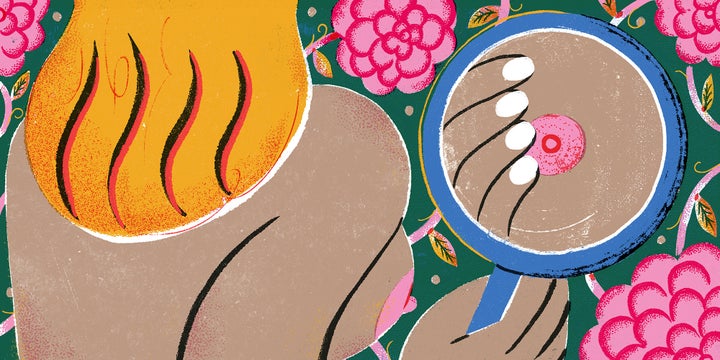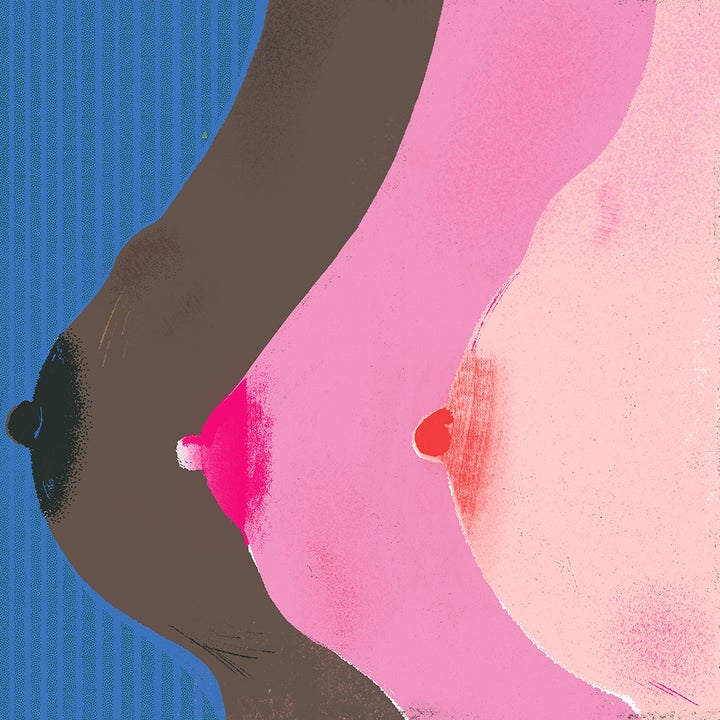
In April 2022, Clea Shearer – co-founder of the popular organisation company The Home Edit – announced that she had breast cancer. The diagnosis came after she discovered a lump in her breast and called multiple doctors to go in for a mammogram as soon as possible.
Estimates suggest that one in eight women in the US will develop breast cancer at some point in their life and rates are similar in the UK, according to the NHS.
Shearer had just turned 40 when she discovered the mass in her breast. Stories like Shearer’s highlight the value of familiarising yourself with what is normal and abnormal for your breasts.
Although many cancer organisations no longer recommend all women conduct monthly breast self-exams due to concerns about their effectiveness and the sense of self-blame they can promote, experts do agree that awareness of how your breasts typically look and feel is useful for detecting signs and symptoms of breast cancer, like lumps.
Still, I imagine I’m not alone when I take the time to feel around that area and wonder, “What exactly am I checking for? What would a lump actually feel like? Am I even doing this right?” So, I asked a few experts to answer those very questions.
What exactly does a breast lump feel like?
“A lump often feels like a round, hard area,” says Dr Arif Kamal, a chief patient officer at the American Cancer Society.
“It can either be deep or toward the skin itself. Typically it is not painful. It’s typically not easily movable but oftentimes fixed in a particular space, meaning it doesn’t shift in its location all that easily. In terms of shape, it is oftentimes round but sometimes it can be a little bit more irregular than that.”
Some experts have suggested the size of a breast lump ranges from as small as a pea to larger than a golf ball. Indeed, Kamal notes that many of his patients have compared it to a pea.
“In my clinical experience, a lot of times patients describe it like a pea in a pod or a frozen pea – sort of on the smaller side, of that texture, and of that hardness,” he says. “It’s generally on the smoother side for texture, generally more firm, generally not painful. And it generally does not feel like a cyst, which feels like a fluid collection – although even if a person feels a fluid collection, they should report that to their clinical team as well.”
Of course, feeling a new lump isn’t the only indication of a potential issue. Susan Brown, senior director of health information at Susan G. Komen, shares a list of eight warning signs, including visual indicators, that people should look out for.
“See a doctor if you notice any of these breast changes,” Brown advises. “Lump, hard knot or thickening inside the breast or underarm area; swelling, warmth, redness or darkening of the breast; change in the size or shape of the breast, dimpling or puckering of the skin; itchy, scaly sore or rash on the nipple; pulling in of your nipple or other parts of the breast; nipple discharge that starts suddenly or new pain in one spot that doesn’t go away.”
Although there are some common characteristics of lumps and other warning signs, there’s ultimately no one specific thing to look or feel for when it comes to your awareness of your breasts. The key is just to understand what is normal for you so that you recognise something new or different ― and seek medical attention when you do.

What’s the best way to notice or spot a breast lump?
Part of the reason some experts no longer recommend monthly breast self-exams is that there are more organic situations during everyday life that provide the opportunity to familiarise yourself with your “normal” and keep you on alert for signs and symptoms.
“Many women who discover changes in their breast or underarm area that turn out to be breast cancer don’t actually discover them on the day and time they have set aside for monthly [self-exam, but rather noticed a change incidentally at some other time, such as when showering or dressing, and recognised the change because they knew what was normal for them – or a partner noticed it,” Brown explains.
Again, the idea is not to necessarily look for something specific, just to take note if there’s anything new or different.
If you aren’t already checking your own body, a good time to start is after you’ve had a breast exam with a doctor, says Dr Janet Yeh, assistant professor at New York University (NYC) Grossman School of Medicine and site chief of breast surgical oncology at NYU Langone Hospital―Brooklyn.
“If you recently had imaging or they did an exam and it was normal, then you can get a good idea of your baseline because you know there’s nothing there. You know the lumps and bumps you might feel are your regular breast tissue.”
She recommends checking your breasts when you’re doing something comfortable and routine, like lying in bed, watching TV, standing in front of the mirror, or taking a shower (“it’s two birds with one stone since you have to wash your body anyway”).
“Everyone’s going to do it a little differently, and that’s OK,” Yeh explains. “Some use the tips of their fingers and go in little circles. Others might say to make the shape of a star. I like to feel with my palm and fingers and do a wiping motion. I think of the breasts as a clock and wipe all around a centre point – then press in to make sure I’m not missing anything behind.”
Lift your left arm as you check your left breast and your right arm for the right. Make sure to also check your underarms, as cancer and other issues can manifest in the form of swollen lymph nodes in that area.
“Some women have very lumpy breasts, so it’s important for those women to get used to their own lumps and bumps,” Yeh notes. “That way they can say, ‘OK in the upper outer area, I usually feel a lot of firmness and lumps.’ And if there’s something different they’re unsure about, it doesn’t hurt to get it checked out, even if it turns out to just be regular breast tissue.”
In addition to seeing a doctor when you detect any change or abnormality, don’t stay silent if you are worried about future risk. If you have a family history of breast cancer or personal health factors that increase your risk, talk to a doctor about that. Discuss which tests are right for you and the proper age and cadence for screenings like mammograms.
“Our technology with breast imaging is so good these days that we really do pick things up early,” Yeh says, who says a mammogram is likely to pick up things before you can even feel them. “Fortunately, most of the breast cancer we see is so early, we can’t even feel it ourselves. Still, it remains important to let a professional know if you feel a new lump in your breast,” she says.